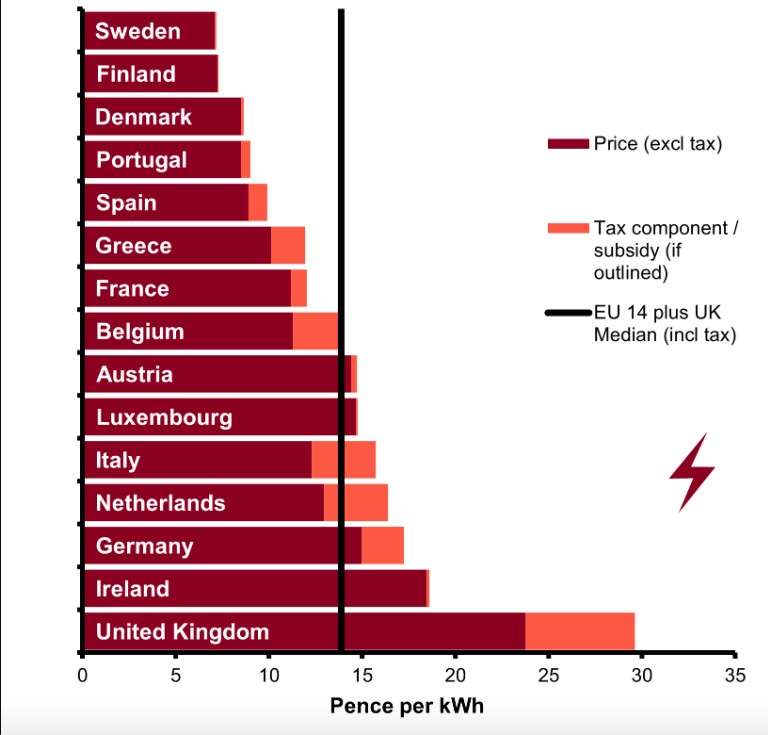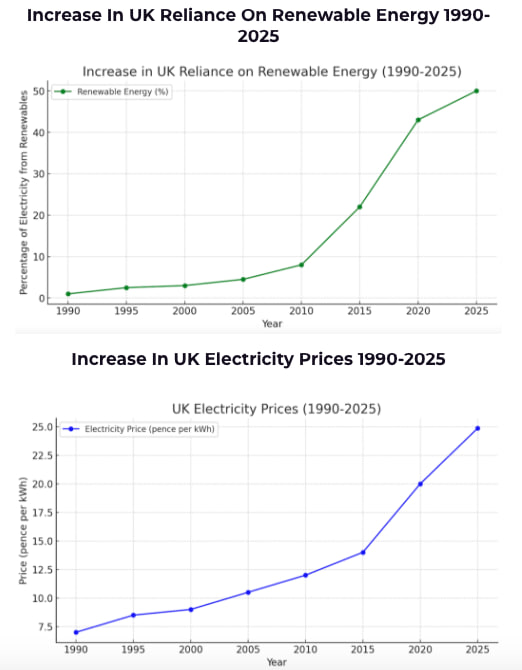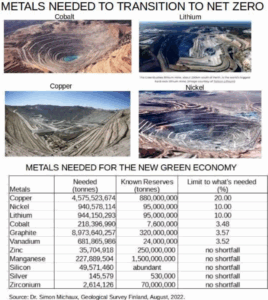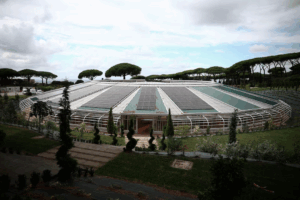The UK’s Renewable Energy Obsession: A Factual Case Against a Disastrous Policy
Wind turbines, solar panels and the demonisation of hydrocarbons is destroying the quality of living for UK citizens

The UK already suffers some of the highest electricity prices in Europe, and renewables are a major driver of this pain. Offshore wind farms, a cornerstone of the UK’s renewable strategy, come with jaw-dropping costs. Take the Dogger Bank Wind Farm, set to be the world’s largest when complete—its price tag runs into the billions, with estimates suggesting £8-10 billion for its full development. Who pays? You do, through inflated energy tariffs and government subsidies baked into your bill. The Contracts for Difference (CfD) scheme, which guarantees renewable developers a fixed price for their electricity, has saddled taxpayers with billions in additional costs—£12 billion in 2022 alone, according to the National Audit Office.

Solar isn’t much better. While cheaper than wind, solar installations still lean heavily on subsidies to remain viable in the UK’s often gloomy climate. These levies hit every household, with the average bill swelled by £100-£150 annually to fund green projects, as reported by Ofgem. The result? Energy poverty is rising—over 3 million UK households were in fuel poverty in 2023, a figure worsened by these renewable-driven costs. The green dream is pricing people out of heat and light.
A Grid on the Brink: Infrastructure Chaos
The UK’s electricity grid, built for the steady hum of coal and gas plants, is buckling under the strain of renewables. We already experienced the first signs of a system caving under the pressure of hopeless ‘green’ solutions with the recent Heathrow debacle which saw hundreds of thousands of passengers delayed and countless fights cancelled.
Wind farms in Scotland and solar arrays in the south feed power into a system never designed for such decentralised, erratic inputs. The result is a logistical nightmare. National Grid has warned that integrating renewables requires £20-30 billion in upgrades by 2030—new cables, substations, and transformers to stop the grid from frying. In 2022 alone, £500 million was spent paying wind farms to switch off during high winds because the grid couldn’t handle the surplus.
The True Environmental Cost Of Renewables
Renewables are sold as the planet’s saviour, but their footprint tells a darker story. Onshore wind farms—think of the 200+ turbines scarring Scotland’s hills—kill thousands of birds annually. A 2019 study estimated that UK turbines slaughter up to 100,000 birds and bats yearly, from kestrels to rare eagles. Offshore, the damage shifts to marine life, with construction noise disrupting whales and seals. Solar farms, meanwhile, devour land—over 13,000 hectares in the UK by 2023—often prime farmland or wildlife habitats. In a crowded island nation, this is an indefensible waste.
Then there’s the dirty secret of production. Wind turbines and solar panels rely on rare earth metals like neodymium and lithium, mined in places like China under horrific conditions. The environmental toll—toxic waste, deforested landscapes—makes a mockery of the UK’s green boasts. Importing these components also ties the nation to volatile global supply chains, as seen in 2021 when shortages drove up costs by 20%.
Mining for renewables exacts a steep environmental price. The Democratic Republic of Congo, supplying 60% of global cobalt, sees rivers poisoned by sulfuric acid from extraction, with 40,000 child miners exposed to toxic dust. Rare earth mining in Malaysia’s Kuantan region has left behind 80,000 tonnes of radioactive waste since 2012, threatening local health. Manufacturing isn’t cleaner: producing one tonne of polysilicon for solar panels consumes 1,500 kWh of electricity—often coal-derived—releasing 1.2 tonnes of CO2. Wind turbine blades, unrecyclable, pile up in landfills—10,000 annually in the US alone by 2025. These facts reveal renewables’ hidden, globe-spanning ecological scars.
The environmental toll of renewable energy technologies stems from the mining of critical materials and their energy-intensive manufacturing processes. Extracting rare earth metals like neodymium (for wind turbines) and lithium and cobalt (for solar batteries) devastates ecosystems. In China’s Baotou region, the world’s top rare earth supplier, mining has birthed a toxic lake visible from space, leaking radioactive waste into groundwater. Each tonne of rare earths mined generates up to 2,000 tonnes of toxic byproducts—acids, heavy metals, and radioactive sludge—poisoning soil and water long-term.
A Failed Experiment
Here at The Climate Con we will be fighting against this madness for the years to come. We have created a wide variety of tools for our ever growing army to help them fight back in their local communities. We also are pioneering the education of the nation of the truth about CO2 with our new leaflets and accompanying Carbon Clarity Campaign. If you, like the thousands of others joining our ranks across the UK and the world see the necessity of action then join us and together, we will defeat The Climate Con!
Continue Your Learning

Climate Working Group Disbanded
Our enemies cannot handle a debate because the truth is too powerful. Instead, they do everything possible to silence opposition.

Net Zero Is Mathematically Impossible
Not only does net zero fail a logic test, it fails a maths test even more significantly. Numbers and facts don’t lie, no matter how loud the climate cult cry.

A Ridiculous Foray into Eco-Fantasy: The Vatican’s “Borgo Laudato Si” A New Climate Cult Centre
For some reason the pope is joining the ranks of the climate cult and is opening a new eco centre to supposedly inspire others to join the climate cult.

Net Zero Banking Alliance Defeated
The net zero banking alliance all but admits defeat as they pause operations and their future hangs in the balance of a members vote.

The Climate Is Always Changing And That’s A Good Thing
The climate is always changing and that is a good thing. I could adapt to it being a bit warmer in the UK quicktime, how about you?

Oil Rig Parts Maker Nearly Completely Abandons Operations Due To ‘cult of carbon’
The UK is getting left behind as the decimation of our industry continues under the banner of net zero. When we realise we don’t need any of this and claim our true abundant destiny?
Our Products
-
Accessories
Stuck Farmer T-Shirt
£18.00 – £24.00 This product has multiple variants. The options may be chosen on the product page -
Accessories
Chemtrail Awareness Sticker 2
£3.33 – £3.83 This product has multiple variants. The options may be chosen on the product page -
Accessories
I Love CO2 Shirt
£17.20 – £29.20 This product has multiple variants. The options may be chosen on the product page









